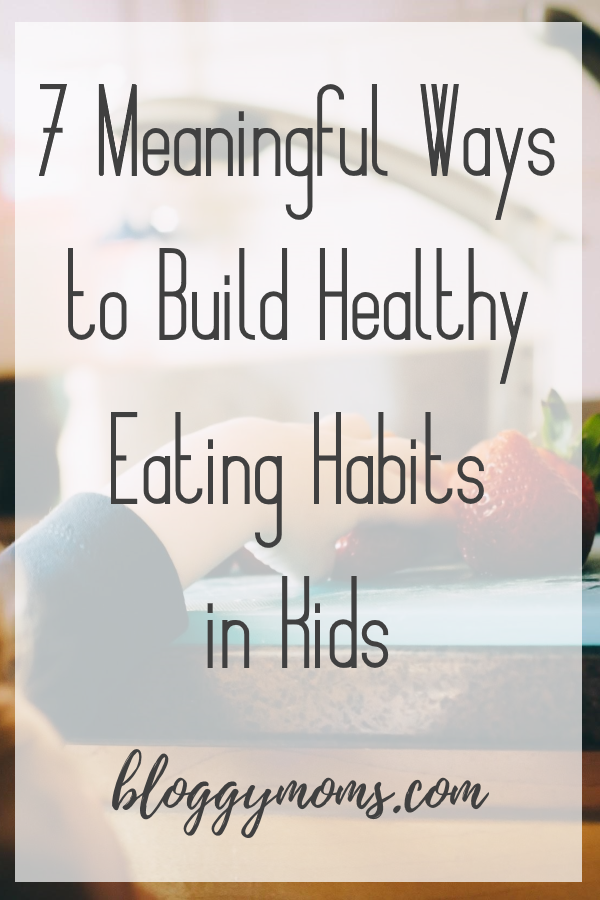As Parenting 101 tells you about many things, start them young. Forming and developing healthy eating habits in children is a tall order with no shortcuts or textbook formula. You tread a thin line between being firm and not forcibly feeding them. It is through cooking and selecting the best ingredients that you show your love and affection for your family.
How do you instill healthy eating at an early age?
Give Them Choices
There are many types of healthy food out there: vegetables, fruits, nuts, healthy beef sticks and other types of produce from nature. These items can be eaten as they are or used to whip up savory meals.
Your goal is to impress on your children that they have options for eating healthy. Their diet does not have to be limited, bland, or boring. If you are not so skilled in the kitchen, it’s time to learn techniques on how to bring about flavor without too much fat, oil, and sugar.
Practice Portion Control
Sometimes, it’s not about the food itself but the size of the serving. Those so-called bite-size snacks, for example, look harmless until they lead to overeating. You can look into this guide when planning meals for the kids and check what constitutes a balanced diet. With proportionate servings, you feel more at ease to give the kids seconds if they ask.
Psychology can also help you in this respect. Use smaller dishes, and encourage sharing desserts.
Choose the Right Type of Carb
Carbohydrates are an essential source of nutrition for kids. These compounds are commonly found in rice, bread, pasta, and potato. The not-so-known sources are beans, legumes, and fruits. Carbs are broken down into sugars like glucose, which, in turn, energize and fuel the body.
As not all carb-rich foods are equal, your task is to find the healthy type for the young ones. The most nutritious sources are often those that undergo minimal to no processing, like whole grains, fruits, beans, and vegetables.
It is best to regulate your child’s intake of sweetened drinks, sodas, and other highly processed foods. Too much sugar consumption can lead to weight gain and other serious diseases. Obesity is a health condition that requires proper medical intervention, if not prevention.
Try Not to Overfeed
Instead of offering your child a plate full of food, give out the meal in the right proportions. This approach can prevent wasting food and hurt feelings if he or she pushes the plate away.
Certain studies note that children’s eating habits (e.g., being selective and not finishing their food) do little to stunt their growth. Forcing your will on the kids, however, can strain your relationship with them and instill in their minds that eating is a chore or an obligation.
To allay your fears about your children not getting the right amount of nutrition, refer to the recommended daily allowance as measured in kilocalories (kcal) by age.
Schedule Snacks
Work out a scheduled hour for small meals here and there. The rule of thumb is not to give out snacks when it’s an hour or closer to lunch or dinnertime.
You can bend the rules sometimes, giving them extra snacks for as long as you have kept track of what they’ve eaten for the day. Sweet potato fries, kale chips, and a piece or two of sliced fruit can pass off as healthy delights.
Eat Together as a Family
Take advantage of dinners to bond with your family over food. As Stanford Children’s Health notes, you can use mealtime as an opportunity for children to pick up and develop sensible eating habits.
Chewing food, for example, teaches them to savor the aroma, texture, and taste of the dish. You also get to talk about what transpired at school or how their day went, providing a stage for encouragement and support.
The habit of mindful eating is a crucial aspect of weight management. In that sense, discourage kids from eating in front of the television or computer screen; it distracts them from the food and causes them to gobble and consume more.
Cook Together
Kids will appreciate what they eat if they know what goes into the food and the effort to make it. You can set aside the weekends to enlist the help of the little ones in handing out the ingredients, stirring the pot, and setting the table. It provides them a sense of importance and independence and promotes consciousness of food consumption.
Baking is extra appealing to children with those tasks like cracking the eggs, using the cookie cutter and decorating the final product. They also get to use tools that are typically kept out of their reach but made safe for them to use.
Desserts can be delicious and healthy when infused with the good stuff. For example, matcha is a powerful ingredient that you can mix into a dessert or drink, enhancing its nutritional content and adding a unique flavor. You can come across plenty of recipes for matcha-infused cookies, cakes, and smoothies online.
Matcha contains catechins and antioxidants that are good for adults and kids. Healthier gums, stronger resistance to flu and other viral diseases, and an overall better immune system are some of the benefits kids can derive from this green tea. The tea itself is safe in prescribed amounts for children.
With these tips, you are moving closer to your goal of raising healthy eaters. What do other parents have to say about their family’s journey to wellness? Let us know in the comments section.

Photo Credit/URL: https://unsplash.com/photos/PMxoh8zJNb0




